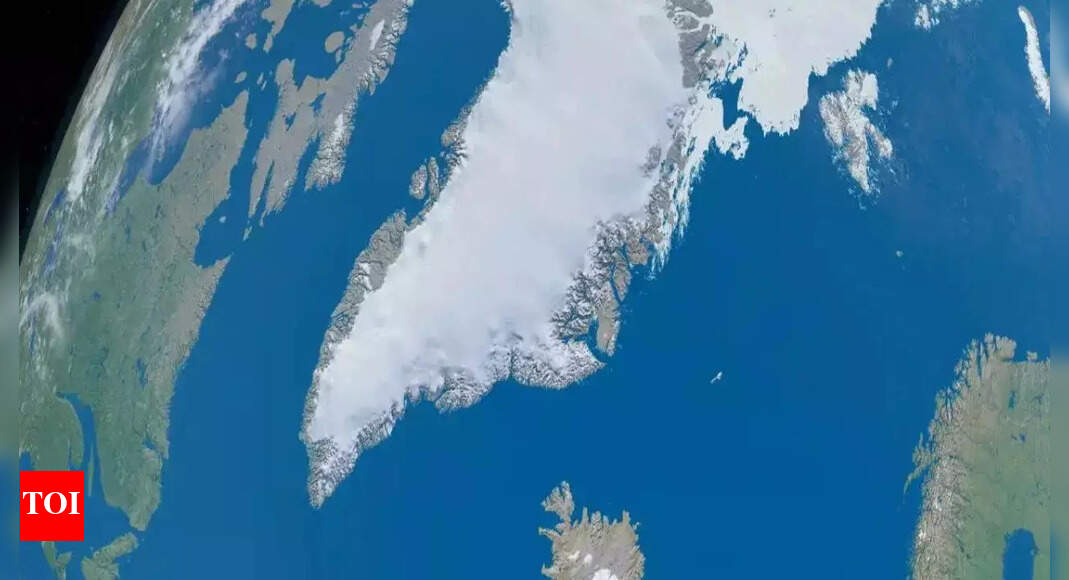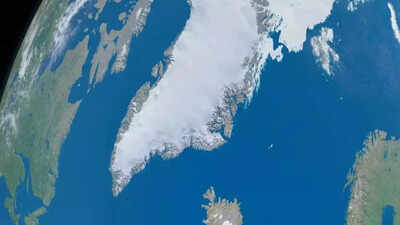A major geological find has been unearthed under the frozen waters of the Davis Strait, the narrow ocean channel between Baffin Island in Canada and Greenland. A combined research team from Sweden and the United Kingdom has found a previously unrecognised landmass under this area. The newly identified feature, now called the Davis Strait proto microcontinent, is made up of abnormally thick continental crust and is about 12 to 15 miles (about 19 to 24 kilometres) wide.
Scientists discover buried proto-microcontinent beneath Greenland’s western offshore
This buried landmass is situated under the western offshore sea of Greenland and has been assigned a primitive microcontinent category. Microcontinents are pieces of continental crust that have separated from extended landmasses but did not completely detach in major tectonic episodes. For this proto-microcontinent, it seems to have remained partially attached when Greenland and North America rifted.
Scientists used a combination of satellite gravity observations and marine seismic data to explore the region:
- Gravity data: Satellite instruments detected minute changes in gravitational force, which were used to calculate density and distribution of subsurface layers of rock.
- Seismic data: Acoustic waves were broadcast from ships, and their reflected waves were interpreted to chart structure and layering of the seafloor.
These supplementary methods enabled the research team to build very detailed computer simulations of the geological history of the area.
How Greenland’s drift built a microcontinent
Researchers mapped out the tectonic history of the region with the data:
About 120 million years ago, Greenland and North America started separating. The separation speeded up around 61 million years ago as the seafloor in the Davis Strait started spreading. In this phase, Greenland shifted along a fault system, the Pre-Ungava Transform Margin, mostly northeast. About 56 million years ago, Greenland’s shift to a more northern trend occurred, the onset of the construction of the Davis Strait proto-microcontinent.
Davis Strait proto-microcontinent offers insights into tectonic evolution
Construction of this microcontinent is considered associated with a major tectonic shift: Approximately 48 million years ago, the North American plate began to pull apart along the Davis Strait. But this action ceased when a new fault system developed in the area, halting further rifting. Greenland had collided with Ellesmere Island by 33 million years ago, a tectonic collision that dramatically reduced its movement and helped make the region stable today.
Currently, the Davis Strait has no major seismicity, indicating that tectonic activity has stopped in the region. Conventionally, tectonic plate motion is believed to be influenced by deep mantle processes like slab pull, by which down-dipping oceanic plates pull other plates down with them. Yet, this find brings to light that structural elements within the lithosphere—the rigid outer shell of the Earth—can also decisively affect tectonic behaviour.
“It appears that the lithosphere, which is the rocks on the outside of the world, has a pretty significant role to play in why the tectonic plates are moving the way they are.”
The Davis Strait proto-microcontinent is not an isolated phenomenon. Similar geological structures have been found elsewhere on the globe, including:
- Jan Mayen, off Iceland
- East Tasman Rise, southeast of Tasmania
- Gulden Draak Knoll, off the western Australian coast
They are cited in support of increasing evidence that microcontinents are more ubiquitous than once thought and potentially contain new information regarding the Earth’s tectonic history.
Also Read | Rare planetary alignment set to create a ‘smiley face’ in the sky on April 25 — here’s how to witness it




